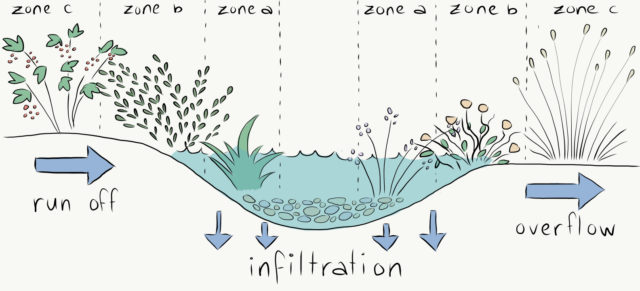
Issue:
As water runs off roofs, across parking lots, and over fertilized fields and lawns it collects chemicals and excess nutrients. Eventually these pollutants end up in our waterways. Small amounts of pollution from numerous sources can collectively cause severe damage. This process is known as Nonpoint Source Pollution because the pollution comes from numerous, dispersed sources.
Functions & Benefits
Planting a rain garden is one way to help prevent Nonpoint Source Pollution and maintain healthy, clean waterways. As rainwater flows into the garden it is filtered by the plants and soil before it slowly infiltrates back into groundwater and nearby streams.
Build Your Own Rain Garden
- You can build a rain garden in your yard to help filter pollutants from your lawn, roof, or parking area.
- Locate an area where water naturally flows, such as a gutter down spout or a low area next to a parking lot.
- Dig a depression 1-2 feet deep to collect rainwater and line the bottom with large stones.
- In the center, plant species that tolerate standing water (Zone A)
- Along the sides, plant species that like occasional water (Zone B)
- Along perimeter, plant species that like dryer conditions (Zone C)
